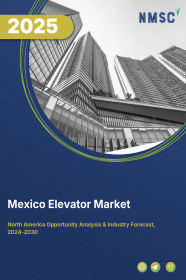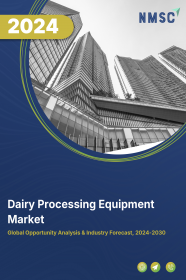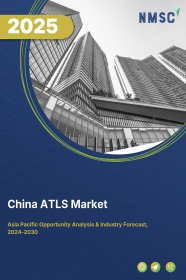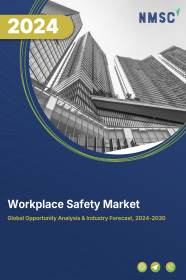
Mexico Elevator Market by Type (Passenger elevator, Freight elevator and Others), by Technology (Traction and Hydraulic), by Service (New Installation, Maintenance and Modernization), by Capacity (Less than 1500 kg, 1500 to 2500 kg, 2501 to 4000 kg and More than 4000 kg) by Speed (Less than 1 M/S, Between 1 to 4 M/S and More than 5 M/S), by Deck type (Single Deck and Double Deck), by Designation Control (Smart and Conventional) and Others- Opportunity Analysis and Industry Forecast, 2024 –2030
Industry: Construction & Manufacturing | Publish Date: 15-Feb-2025 | No of Pages: 129 | No. of Tables: 95 | No. of Figures: 60 | Format: PDF | Report Code : CM1607
US Tariff Impact on Mexico Elevator Market
Trump Tariffs Are Reshaping Global Business
Market Definition
Mexico Elevator Market size was valued at USD 2.43 billion in 2023, and is predicted to reach USD 4.58 billion by 2030, at a CAGR of 8.3% from 2024 to 2030. The elevator market represents a dynamic sector encompassing the design, manufacturing, installation, and maintenance of elevator systems. From conventional traction elevators to cutting-edge smart solutions, this market offers a diverse array of vertical transportation choices customized to suit the distinct requirements of various buildings and infrastructure projects. Stakeholders within the elevator market include manufacturers, suppliers, contractors, architects, building owners, and facility managers. Manufacturers continuously innovate to enhance elevator performance, safety, and sustainability, while suppliers provide critical components and materials necessary for system construction.
Additionally, sustainability considerations, including energy efficiency and material recyclability, are increasingly integral to elevator design and operation. They align with broader environmental objectives and sustainable building practices. Thus, the elevator market is a cornerstone of vertical mobility as elevators enhance functionality, accessibility, and sustainability within buildings and urban landscapes worldwide.
Rising Construction Sector Drives the Growth for elevators Market
The upsurge in building and construction activities serves as a primary driver propelling the expansion of the elevator market. As urbanization reshapes landscapes across the nation surges the demand for vertical infrastructure such as high-rise buildings, skyscrapers, and mixed-use developments is on the rise. This trend is particularly noticeable in developing economies, where rapid urbanization and population growth demand innovative solutions to accommodate dense urban populations. Consequently, the construction industry witnesses a surge in ambitious architectural projects that redefine city skylines and urban environments.
Within these burgeoning structures, elevators assume a crucial role as essential conduits of vertical mobility. They efficiently transport occupants and goods between floors, ensuring seamless access to various amenities, residences, offices, and recreational spaces. elevators enhance convenience and optimize space utilization within tall structures, thereby maximizing the value of vertical real estate. Moreover, the emergence of mixed-use developments underscores the versatile nature of elevators, seamlessly connecting residential, commercial, and retail spaces within a cohesive complex, thereby enhancing accessibility and functionality. As construction activity intensifies to meet the demands of urbanization, elevators emerge as pivotal elements of modern infrastructure, further propelling the growth trajectory of the elevator market.
Robust Urbanization is Fuelling the Growth of the Market
The rising urban population in Mexico, with an expected annual growth rate of 1.4% from 2020 to 2025, serves as a significant driver for the elevator market in the country. As more individuals migrate to urban areas, there is a corresponding increase in construction activities for both commercial and residential buildings. High-rise structures are becoming more prevalent to accommodate the growing population, leading to a surge in demand for elevators. elevators play a vital role in vertical transportation within these buildings, making them indispensable components in meeting the demands of urbanization in Mexico.
High Initial Costs Restrains the Market Growth Over the Region
The considerable expenses linked with elevator installations, maintenance, and upgrades pose significant obstacles to market growth. The initial capital required for installing elevator systems, especially in buildings not initially designed for such infrastructure, can impose a substantial financial burden on building owners and developers. Furthermore, ongoing costs associated with maintenance contracts, involving regular inspections and repairs, add to the overall ownership expenses. Additionally, the necessity for modernization to comply with updated safety standards and improve energy efficiency further compounds the financial strain. These expenditures can be particularly challenging for building owners in regions with limited financial resources or older buildings where retrofitting elevators is intricate and expensive. As a result, the elevated costs associated with elevators impede market expansion, affecting growth opportunities across various regions.
The Integration of Artificial Intelligence (AI) in elevator Creates Future Opportunity Growth
The implementation of AI-driven predictive elevator maintenance represents a lucrative opportunity within the elevator industry, leveraging AI to transform maintenance and management practices. Through the analysis of data collected from elevator sensors, AI algorithms can proactively identify maintenance needs, thereby reducing downtime and maximizing elevator uptime. This proactive approach not only extends the lifespan of elevator components but also enhances safety by preventing unexpected breakdowns and optimizes resource allocation, resulting in significant cost savings for elevator companies. Moreover, reliable and well-maintained elevators contribute to heightened user satisfaction, thereby enhancing the overall experience for building occupants and visitors. Embracing AI-driven predictive maintenance enables elevator companies to remain competitive and deliver superior service quality amidst a rapidly evolving market landscape.
Competitive Landscape
The Mexico elevator market comprises various market players, such as Schindler, Otis Elevator Company, TK Elevator (TKE), KONE Corporation, Fujitec Co. Ltd, Hyundai elevator Co. Ltd, Mitsubishi Electric Corporation, Nibav Lifts, Home Elevators by PVE, KOYO Elevator Mexico and others.
Mexico Elevator Market Key Segments
By Type
-
Passenger elevator
-
Freight elevator
-
Others
By Technology
-
Traction
-
Machine Room [MR] Traction
-
Machine Roomless [MRL] Traction
-
-
Hydraulic
By Service
-
New Installation
-
Maintenance
-
Modernization
By Capacity
-
Less than 1500 kg
-
1500 to 2500 kg
-
2501 to 4000 kg
-
More than 4000 kg
By Speed
-
Less than 1 M/S
-
Between 1 to 4 M/S
-
More than 5 M/S
By Deck Type
-
Single Deck
-
Double Deck
By Designation Control
-
Smart
-
Conventional
By Door Type
-
Automatic
-
Manual
By Application
-
Residential
-
Commercial
-
Industrial
REPORT SCOPE AND SEGMENTATION:
|
Parameters |
Details |
|
Market Size in 2023 |
USD 2.43 Billion |
|
Revenue Forecast in 2030 |
USD 4.58 Billion |
|
Growth Rate |
CAGR of 8.3% from 2024 to 2030 |
|
Analysis Period |
2023–2030 |
|
Base Year Considered |
2023 |
|
Forecast Period |
2024–2030 |
|
Market Size Estimation |
Billion (USD) |
|
Growth Factors |
|
|
Companies Profiled |
10 |
|
Market Share |
Available for 10 companies |
|
Customization Scope |
Free customization (equivalent up to 80 working hours of analysts) after purchase. Addition or alteration to country, regional, and segment scope. |
|
Pricing and Purchase Options |
Avail customized purchase options to meet your exact research needs. |
KEY PLAYERS
-
Schindler
-
Otis Elevator Company
-
TK Elevator (TKE)
-
KONE Corporation
-
Fujitec Co. Ltd
-
Hyundai elevator Co. Ltd
-
Mitsubishi Electric Corporation
-
Nibav Lifts
-
Home Elevators by PVE
-
KOYO Elevator Mexico

















 Speak to Our Analyst
Speak to Our Analyst




















